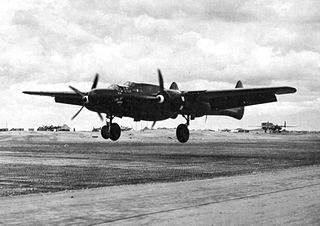
The Fifteenth Air Force is a numbered air force of the United States Air Force's Air Combat Command (ACC). It is headquartered at Shaw Air Force Base. It was reactivated on 20 August 2020, merging the previous units of the Ninth Air Force and Twelfth Air Force into a new numbered air force responsible for generating and presenting Air Combat Command’s conventional forces.

The 306th Flying Training Group is a unit of the United States Air Force, assigned to Air Education and Training Command (AETC). The group is stationed at the United States Air Force Academy (USAFA) near Colorado Springs, Colorado.

The 322d Air Expeditionary Group is a provisional United States Air Force unit assigned to the United States Air Forces in Europe. As a provisional unit, it may be activated or inactivated at any time.

The 740th Missile Squadron is a United States Air Force unit stationed at Minot Air Force Base, North Dakota. The squadron is equipped with the LGM-30G Minuteman III intercontinental ballistic missile, with a mission of nuclear deterrence.

The 392d Air Expeditionary Group is a provisional United States Air Force unit. It is assigned to Air Combat Command to activate or inactivate as needed. The group was last active as the 392d Strategic Missile Wing at Vandenberg Air Force Base, California, where it briefly operated three early models of intercontinental ballistic missile during 1961. In 1984, the wing was consolidated with the 392d Bombardment Group

The 55th Fighter Wing is a disbanded unit of the United States Air Force, last stationed at Lockbourne Air Force Base, Ohio. It was withdrawn from the Ohio Air National Guard and inactivated on 31 October 1950 when the Guard adopted the Wing Base organizational model and formed the cadre for the 121st Fighter Wing.

The 304th Air Division is an inactive United States Air Force organization. Its last assignment was with Fourth Air Force at Long Beach Airport, California, where it was inactivated in June 1949.

The 306th Fighter Wing was a World War II United States Army Air Forces organization assigned to Fifteenth Air Force as an intermediate-level command and control organization. It was last stationed at Drew Field, Florida and was inactivated on 7 November 1945.

The 309th Air Division is an inactive United States Air Force organization. Its last assignment was with Continental Air Command, assigned to Twelfth Air Force at Hensley Field, Texas. It was inactivated on 27 June 1949.

The 310th Air Division is an inactive United States Air Force organization. Its last assignment was with Continental Air Command's Twelfth Air Force at Tinker Air Force Base, Oklahoma, where it was inactivated on 27 June 1949.

The 338th Bombardment Group is a disbanded United States Air Force unit. It was last active with Continental Air Command at O'Hare International Airport, Illinois on 27 June 1949. It was first activated during World War II as the 338th Fighter Group and served primarily as a training unit until it was disbanded in 1944. The group was reconstituted in the reserves in 1947, but was inactivated when military spending was reduced in 1949.

The 305th Operations Group is a United States Air Force unit assigned to the 305th Air Mobility Wing. It is stationed at the McGuire AFB entity of Joint Base McGuire-Dix-Lakehurst, New Jersey.

The 384th Air Expeditionary Group is a provisional United States Air Force unit assigned to the Air Combat Command. The 384 AEG may be activated or inactivated at any time.

The 442d Operations Group is an active United States Air Force Reserve unit. It is the flying component of the Tenth Air Force 442d Fighter Wing, stationed at Whiteman Air Force Base, Missouri.

The 745th Expeditionary Airlift Squadron is a provisional United States Air Force unit. It is assigned to Air Combat Command to activate or inactivate as needed. Most recently, it operated Lockheed C-130 Hercules aircraft in theater airlift missions as part of the Global War on Terrorism.

The 747th Bombardment Squadron is an inactive United States Air Force unit. The squadron was first activated in June 1943. After training in the United States,, it deployed to the Mediterranean Theater of Operations, where it participated in the strategic bombing campaign against Germany. It earned two Distinguished Unit Citations for its combat operations. Following V-E Day, the squadron returned to the United States and began reorganizing as a very heavy bomber unit, but after the Japanese surrender, was inactivated in October 1945.

The 39th Electronic Warfare Squadron is an active United States Air Force unit. It is assigned to the 850th Spectrum Warfare Group at Eglin Air Force Base, Florida.

The 738th Expeditionary Airlift Squadron is a provisional United States Air Force unit. It is assigned to Air Combat Command (ACC) to activate or inactivate as needed. It operates Lockheed C-130 Hercules aircraft in theater airlift missions as part of the Global War on Terrorism. Its current status and duty location is undetermined.

The 737th Expeditionary Airlift Squadron is a provisional United States Air Force unit assigned to Air Combat Command (ACC) to activate or inactivate as needed. It operates Lockheed C-130 Hercules aircraft in theater airlift missions as part of the Global War on Terrorism. Its current status and duty location is undetermined.

The 323d Expeditionary Operations Group is a provisional United States Air Force unit assigned to the United States Air Forces in Europe. As a provisional unit, it may be activated or inactivated at any time.






















